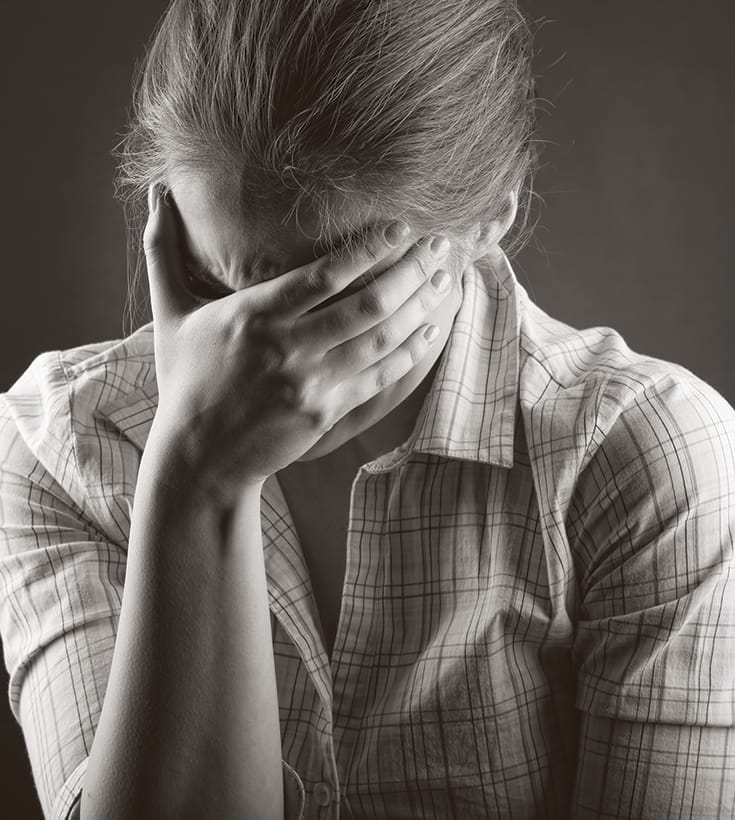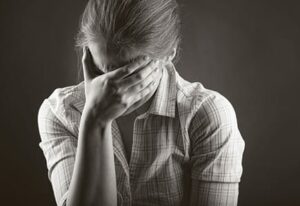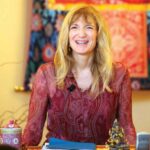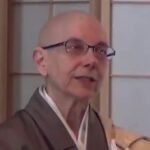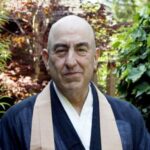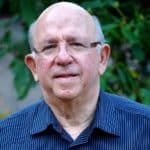Abuse can take different forms: financial, psychological, physical, sexual. Recent headlines have revealed that spiritual communities, including Buddhist ones, are particularly vulnerable to sexual abuse by male authority figures. At the same time, all over North America, targets of sexual abuse and institutional betrayal are speaking out with newfound energy, their words and experiences echoing over instant media to resonate with millions of others. More and more people are calling out habitual oppressions, exorcising self-blame, and inspiring others to wake up, saying, “No more! I am worthy of decency and respect.” Like never before, institutions such as colleges, military forces, workplaces, and spiritual organizations are hastening to move forward from patterns of denial. Typical of the new messaging, the White House recently launched a campaign that sets a new normal for group responsibility, making it uncomfortable for us to stand idly by while friends and fellows abuse. We are casting off centuries of myths that normalized abuses or at best treated them as an insurmountable problem. Communities are genuinely asking, what can we do differently?
Ordinary worldly knowledge is valuable here. Research shows that when secrecy, minimizing, and rationalizations about abuse are overcome, healing and safety begin. Much progress has been made in recognizing the cultural causes and conditions that give rise to abuses of power and of persons, especially those based on sex, race, class, sexual orientation, disability, and ethnicity. The World Health Organization, for example, lists the lionizing of a violent and dominating masculinity, female subordination, and racism as a potent recipe for abuse. Examining which groups are included and which are excluded in teaching, governance, and wealth can also tell us where to expect challenges. Are we willing to look at our Buddhist communities for these sorts of well-known habitual patterns and imbalances and then to dissolve them?
A new way forward will also require daring. If we really think about our future, sanghas must not just be collections of individual meditators but also healthy communities that promote inclusion and provide a good ground for the dharma to flourish. We cannot afford to ignore the value of all our relations. It is said that dharma and the bonds of dharma communities can only be destroyed from the inside. Abuse, then, is not just a personal “incident”; it is also a great threat to the continuity of wisdom traditions. Communities must find confidence to act, shifting toward greater respect and empowerment for women, minorities, youth, and others frequently targeted for abuse. In a community that listens and trusts these voices, would-be abusers cannot operate.
How would this kind of community feel? What would happen differently if someone were abusive? How much more potential would be realized by its children? —Pam Rubin
Buddhadharma: Each of you is familiar with communities that have been shaken by teacher misconduct. That initial period when the abuse of power is exposed—what does it feel like, personally and within a community?
Shinge Chayat: Trauma, in a word—there’s the realization that a person you trusted and admired has disappointed you and brought everything into question. If a teacher is no longer trustworthy, everything is up for examination. We tend to elevate teachers to a noble height and refuse to see their human failings until they have manifested in very difficult and dangerous ways. So even though it feels terrible, becoming disillusioned can help us break through delusion and bring clarity to what’s going on. Unfortunately, what’s going on is often veiled in secrecy; practitioners may feel or sense something happening in a community but the culture discourages questioning. So when misconduct is finally revealed, it’s an enormous shock.
Buddhadharma: David, you were part of the Shambhala community when allegations first came to light that Osel Tendzin had knowingly infected someone with HIV. What was your experience of being in the community at that moment?
David Whitehorn: It was shocking. It felt like suddenly the whole world had changed. A lot of strong emotions came up—anger, sadness, disappointment. And lots of people had opinions about what had happened and why. During that period when everyone was feeling extremely exposed and vulnerable, we benefited greatly from the calm advice of teachers outside of our community who had been working with us. They had the respect of everyone in the community and were extremely helpful in navigating the divisions within the group about what had happened and how to move forward.
Buddhadharma: Lama Palden, what has been your experience of communities dealing with misconduct or abuse?
Lama Palden: At some of Kalu Rinpoche’s centers in France, there were lamas who had engaged in unethical behavior and had to be removed. I’ve also acted as a mediator at dharma centers here, where the unethical conduct involved Western teachers.
As others have said, there’s always a great deal of shock and disappointment in these situations. There’s also a lot of hurt and a sense of betrayal. One of the serious concerns is that many of the people who get hurt the most are those who already have experienced abuse in their childhood. Instead of the dharma being a place where they can heal and find safety, it becomes another place of perpetration and hurt.
I’ve been in the room during some of these mediations where there was so much pain. We really have to acknowledge the level of pain that unethical activity brings forth in people. Just unbelievable pain. And I’ve seen hundreds of women turned off of the dharma. When encounters with abuse happen early on in someone’s dharma career, they haven’t yet developed the skills that might help them stay.
Buddhadharma: We should also point out that the young Kalu Rinpoche put out a YouTube video a couple of years ago talking about his own experience of being abused growing up in a monastery.
Lama Palden: Yes, he has brought the issue out of the closet for the Tibetan and Vajrayana communities, because of course it’s happening in all the monasteries. Some of my British male friends have told me it’s very much like the British public schools system—it’s something that has always gone on and everybody knows, but nobody talks about it. I think it was very courageous of Rinpoche to bring the misconduct to light. He wants to work inside the system for change.
Buddhadharma: Alan, what are some of your experiences and observations of the problem of abuse of power?
Alan Senauke: Shortly after I had begun working at the Buddhist Peace Fellowship in 1991, the organization was referenced as a resource in the back of Peter Rutter’s book, Sex in the Forbidden Zone. When the book came out, suddenly women who had been victimized by teachers and then excluded by their communities started calling us.
I’ve noticed that people in pain not only turn inward and build a cyst or capsule around themselves for protection but they also turn against each other. It’s not just that people have different opinions of what’s going on and what should be done. Often the teacher has been the binding energy of a community, and when that is removed or shattered, practitioners can’t find closeness or mutual support within the group. So it can be a volatile and fragile situation. It’s very destructive and can run like wildfire through a community. Once that fire starts burning, it’s difficult to control.
Buddhadharma: Shinge, looking back on the conflict that arose in your community, The Zen Studies Society, what were some of the conditions that gave rise to ethical misconduct and how it was handled?
Shinge Chayat: There’s so much to the answer, but I could distill it to one word: secrecy. When secrets are well hidden, well kept, people become complicit without realizing it. No one is really sure what’s going on, and no one is allowed to question things—especially in an Asian patriarchal structure that discourages transparency. Unethical behavior that may be accepted in another culture—not necessarily approved of, but tacitly ignored—is not okay in ours. Our framework of Western psychology has us more predisposed to look at issues directly and not allow the same old patterns. We want to see what’s really going on, and when that investigative spirit runs up against an old guard saying don’t question authority, even more divisiveness can be created. That’s been a big issue for us at The Zen Studies Society. We’ve had to learn how to question authority, and we’ve had to see all the aspects, whether cultural or personal, that led to the structure of a secret society and the elevation of one human being to a god-like status, which created a situation where no one felt safe to ask questions.
Buddhadharma: Lama Palden, what are your thoughts on this? You know the structure of the Tibetan Buddhist world where rinpoches are held in high regard.
Lama Palden: When I first came to the dharma, I stayed with Kalu Rinpoche and the Sixteenth Karmapa. Early on in the course of informal conversation, the Sixteenth Karmapa mentioned some concerns about various lamas and tulkus, saying he was having trouble with this one or that one. Kalu Rinpoche had also expressed concerns. So I knew there were problems of misconduct and that not everything was completely above board.
I think it’s important to look at what leads to these things happening in the first place. One cause is emotional isolation. Teachers may be coming from afar, but even if they’re not from a different culture, there’s a tendency for spiritual teachers to become isolated; they don’t have friends and colleagues with whom they can share trials and tribulations. Another problem is that sometimes teachers feel they can’t reach out for help, or that they’re not supposed to need help. And of course, in the Asian model, such resources weren’t available, although perhaps they could have gone to their own teachers and in some cases may have. But for the most part, teachers aren’t getting their own psychological needs met.
As teachers, we need to be very conscious of what our own emotional and psychological needs are, and we need to try and meet those in healthy ways rather than pretend they’re not there. And we need community. I’m in a Buddhist teachers’ group in the Bay Area that has been meeting for over twenty years to talk openly and frankly about whatever issues arise for us.
David Whitehorn: I think the question of how the student-teacher relationship is presented plays a big part in issues of misconduct. The old admonition of the Buddha is “Don’t just believe what I tell you; see if it actually makes sense to you.” To the extent that that’s part of a community’s culture, it can be very helpful in validating the responsibility students hold for their own path and awakening. On the other hand, Buddhist practice undermines conventional, conceptual ways of dealing with the world and morality, which can be confusing, especially to those first encountering the path. Other people can take advantage of that. A classic sort of pickup line you might hear longtime practitioners use on newer students is “Oh, honey, this is advanced Buddhism. If you want to know what this tantric stuff is really about, let’s go to my place.”
Alan Senauke: My experience has been quite different. At Berkeley Zen Center, from very early on, the precepts were communicated to us in both a relative and absolute manner, so conventional morality was never set aside. But I think the more important element—and this is a real concern of mine—is the degree to which the practice is focused on a single so-called “enlightened being” rather than a relationship of mutual accountability between teacher and student. Secrecy flows from a delusion about power and authority. The more the sangha upholds precept practice, the more protected people are. Certainly there is a patriarchal model in Asia, and we tend to idealize it here. But translating that model into our cultural terms without real adaptation is a huge mistake. In the West, we have a shared ethical dimension that should not be discarded when we enter the practice but should instead harmonize with it. I feel the antidote to misconduct has been ethical training. I’m not talking about guidelines and procedures—I’m talking about actually studying the precepts from early on.
Buddhadharma: What else can help change the course of ethical misconduct? David, knowing what you know now, is there something the Shambhala community could have done differently when Osel Tendzin was head of the organization?
David Whitehorn: That’s hard to say, given that times were very different, and the stage of development in the community and in people’s individual practice was so different. Greater transparency is certainly key, as is having ethics laid out right at the beginning.
Buddhadharma: Shinge, do you feel there is anything that could have been done while Eido Roshi was still head of the community that could have changed the whole course of events?
Shinge Chayat: We couldn’t do anything until he was no longer holding all the power. People tried many times. In the seventies, many of us left because there was no way to make any change happen. When I came back in the nineties, it seemed changes had occurred for the better. But really, he still had all the power. When all the power in a community is in one person’s hands and that person is supported unconditionally by others, including board members and senior students, there’s no way you can say, “Hey! This is wrong. We have to make some changes here.” It can’t happen. Prior boards had tried their best.
In 2010, when the revelation of a new relationship came to light, one of the first things we did was ask Eido Roshi to step down as a member of the board. He was the head of the board as well as abbot. With both secular and spiritual dimensions held by the same person, there was no balance of power. The board basically rubber-stamped whatever Eido Roshi said. So the first thing we had to do was ask him to submit a letter of resignation. That happened very quickly, within three weeks after that revelation of the affair. Then we worked with the Faith Trust Institute and asked them to help us get through the next stages, which included not just dealing with the problems that had accrued over decades but also looking at how to avert problems like that in the future.
Buddhadharma: You’ve all talked about the shock people experience when it’s revealed that their trusted teacher has been involved in ethical misconduct or abuse. After the shock subsides, how can a community start to rebuild?
Alan Senauke: The first thing is to really listen. Listen to everybody—on all sides—and create open forums, combining people from within the community and without who can offer equanimity and presence to hear everyone, including those who have been accused of crossing boundaries. Then there has to be some discernment process. In the vinaya, there are prescribed remedies for different breaches of the precepts before a monk or a nun can sit in the whole circle again. They have to make confession and repentance, either to their peers or to their elders. We can translate that to our present-day experience in different ways, but there has to be a lot of speaking and listening.
Also, the sangha has to hold the grief that some people will not be healed. Even with the best of intentions, some people will be wounded and leave. Some will not want to heal, and that includes victims and perpetrators. And when they don’t, there’s nothing you can do, but as a holder of the container, you still have a responsibility to make every effort. We have to have the groundedness to be able to hold all of that.
Shinge Chayat: The process of healing, of regaining trust after decades during which power was abused and trust was lost, is a very long one. It may take years for people to feel they have finally come to a place where they are healed. The immediate situation may be taken care of, but you have to constantly work on the process. You can’t just have one sangha meeting or some kind of guidance from professionals in the field and then say, “Okay, we’ve got it!”
The Faith Trust Institute made five recommendations, which we followed: Eido Roshi had to end his tenure as abbot; he needed to make a full public apology acknowledging his misconduct and regret for harm done; those students who wanted to continue studying with him had to do it on their own, not under the auspices of The Zen Studies Society; we had to conduct a formal financial audit; and we needed to consult with colleagues who had gone through similar misconduct issues.
After those things happened, we began working with a wonderful group of professionals called An Olive Branch. They led a mediation session with Eido Roshi and the board of directors. We also held several sangha meetings at which An Olive Branch was present and had a sangha weekend that was probably the most important thing for us. We invited everyone to come and spend the entire weekend going through a very difficult but important facilitated discussion. There were so many raw emotions, and so many incidents were brought to light that we hadn’t been aware of. We created a timeline that filled an entire wall. People came up and posted comments, asked further questions, and shared what they knew. It was all out there, which was really key—we went from an organization plagued by secrecy and authoritarianism to one that is transparent and hewing to ethical guidelines. We spent two full years with An Olive Branch working on developing best practices for a board that could represent the sangha and help make sure that such transgressions never happened again.
As a result of this process, I feel that sangha members are speaking with clarity and ethical consideration for one another and that we’ve returned to fulfilling our task, which is living our bodhisattva vow, manifesting our insight.
David Whitehorn: In our situation, in the early nineties, we were not only recovering from the trauma of discovering that a trusted leader had let us down but also grieving the loss of our founding teacher, who was a great mahasiddha. Fortunately, Trungpa Rinpoche had trained two people, the other one being his son, Sakyong Mipham, who for five or so years following that traumatic event just listened. He travelled around and listened to everybody and, bit by bit, began to reconstruct the community. The profound listening at the beginning was essential.
Lama Palden: The young Kalu Rinpoche told me a similar story, that when he took responsibility for centers all around the world at the age of eighteen, he had to step in to address issues of abuse. At one center, he told all the women to come speak to him one by one. It took two days to hear them all out. He told me he cried the whole time. It was important that the women were heard. And then, of course, he did take measures to deal with the problems, but acknowledging the level of pain and upset is a crucial first step.
Compassion and loving-kindness have to be emphasized and worked with much more in our spiritual communities, both in how teachers practice and develop and in how they guide students. I think it’s a failure of compassion when people are used for other people’s satisfaction.
I also want to reiterate what Shinge was saying about boards. We’re Americans talking about Buddhist centers in America. There are nonprofit laws here governing religious organizations, and boards are a key part of accountability. Nonprofit laws exist to protect the public; as religious or spiritual people, we shouldn’t try to circumvent those laws just so the board can be a rubber stamp for the teacher.
Buddhadharma: When misconduct occurs, leaders generally try to see if mediation is possible. But how realistic is it to draw new boundaries around a teacher who has committed abuses of power multiple times? In order for people to feel safe and protected in their sangha, at what point do you say the conversation is over and stricter measures are needed, perhaps involving the judicial system?
Alan Senauke: In Scott Edelstein’s book, Sex and the Spiritual Teacher, he distinguishes between garden-variety delusion, if you will, and pathology. There is a difference, and not all of us are capable of making that discernment; skilled, professional evaluation is essential to assess the situation. If a teacher crosses a boundary out of loneliness or isolation and you can bring that person back to the shore that we’re all standing on, great. But if there is a pattern of pathology or predation, forget it. You’ll burn out the sangha trying to rein in somebody like that. I know of sanghas that have ended up firing their teacher and selling their center because the pattern continued over and over, and it became clear that resolution wasn’t possible. In those cases, it was far more than a question of reminding somebody of their vows or the precepts.
Lama Palden: There needs to be a lot more education about the nature of student–teacher relations, that sexuality is something that the student has a full and complete right to not engage in with a teacher. This leads to a much larger question about how centers are structured in terms of authority, how that authority enters teacher–student relationships, and how people are educated about those structures. These relationships need to be based on conscious mutual agreements.
But we also have to have compassion for teachers; they should be given a chance to rehabilitate, to heal, and to work on themselves. Sometimes with therapy and abstaining from teaching for a year or two, they can come back into the role of a teacher, but sometimes the problems run too deep. In France, in our lineage, four lamas who had been running the center for thirty years had to be removed.
Knowing many friends, both teachers and students, involved with the San Francisco Zen Center, I’m aware that thirty-plus years after the events surrounding Richard Baker and his departure, people are still healing. It’s a long process.
David Whitehorn: Yes, these are very long-term issues, perhaps lifelong or beyond. Shambhala has two hundred centers all over the world, and periodically we hold gatherings for representatives from all the centers. At one of these, we were to discuss twelve major issues that the leadership had determined were of interest to the wider sangha. But all of a sudden a bunch of people jumped up and said, “Wait a minute. We want to talk about what happened with the Regent, Osel Tendzin, fifteen years ago.” So we formed a new group to discuss it. It was wonderful to have that spontaneous, genuine response.
Our sangha did split years ago when Osel Tendzin left; a separate organization was created. And there continue to be questions regarding the extent to which the Regent’s contribution to the development of Shambhala should be acknowledged.
Shinge Chayat: That’s a big issue, isn’t it? How to acknowledge the good someone has done while also deploring the hurt they have caused for many people.
David Whitehorn: The process of trying to determine the extent to which someone who has been guilty of misconduct can become a contributing member of the community is not easy. Is the person in a position of authority that they really can’t handle? They may be removed from that position at least temporarily, but then after working with them, the question is, can they go back or not? Is it appropriate? You’re never really sure; there’s a lot of uncertainty. Compassion is so important, in the sense of seeing what the person can really do and who they really are. It’s not compassionate to put them in a position they can’t handle.
Buddhadharma: Given that healing from traumatic events is such a long-term process, perhaps we can’t ever talk about them as being completely in the past. But in the time that has elapsed, how have these events and their aftermath affected the culture of your communities? Have the internal dynamics changed?
Shinge Chayat: Initially, the events affected us in a negative way. We were attacked on all sides; people who were really concerned about the women who were harmed felt that we weren’t acting quickly enough to make things right. We were cautious in ways that felt necessary. It takes time to do something from a place of right action; you can’t just have knee-jerk reactivity. But some people were so angry that they left and will never come back. A number of sangha members decided to follow Eido Roshi. They felt that his greatness as a teacher superseded his flaws. They believed what he had to offer as a teacher was far beyond what anyone else could give them, so they wanted to stay with him. That division initially left us understaffed at the monastery and at the New York temple as well. Egyoku Roshi of the Zen Center of Los Angeles, who has been a tremendous source of advice and support, said, “Those who need to go should go; don’t worry about it. New people will come.” And sure enough, after three and a half years, we have a cohesive community. More and more people are feeling the faith in what we’re doing and are drawn to the vigor of the practice. It’s been an exhausting time, but now there’s a great sense of optimism.
Buddhadharma: Is the structure of your sangha less hierarchical now that Eido Roshi has left?
Shinge Chayat: My leadership style is very different from Eido Roshi’s, just as his was very different from his teacher’s, Soen Nakagawa Roshi. The feeling about a teacher’s role is going to change depending on those different ways of being. My style is much more relational. I check in with people; I don’t make decisions autonomously. People feel that they are gaining a sense of responsibility, that they’re contributing to the way decisions are made.
Buddhadharma: Lama Palden, what can you say about how these major upheavals change a community in the longterm?
Lama Palden: There’s often a huge divide that happens and a split in the sangha, but on the positive side, if traumatic events can be turned to the path and handled in a conscious, compassionate manner, changes can lead to a much more mature community, one with more resiliency and transparency. As has been said, some people are not going to heal, either because they don’t want to or because they lack the capacity to do so. This is why I think so much focus needs to be on preventing these situations from arising in the first place. But our Buddhist practice is to turn all of life’s circumstances into the path of the bodhisattva, so if we’re each able to do that, and if communities can do that, then these traumas can lead to more maturity and awakening.
Buddhadharma: I think it’s also important to point out that the degree to which people heal or don’t heal largely depends on the skillfulness or unskillfulness of the community in relating to the abuse that has occurred.
Lama Palden: Absolutely, and more specifically it depends on to the leadership of that community.
Buddhadharma: For people reading this—across the traditions and in different communities, some big, some small—what’s the takeaway here? If they’re sitting down with their sangha members next week or if they’re on a board, what should they be thinking about in terms of addressing ethical issues within their community? What kinds of guidelines need to be in place?
Alan Senauke: I wrote a small book about this in the late nineties called Safe Harbor. I was just rereading it, and I feel like it’s still completely relevant. A central point of the book is that you have to have clear ethical guidelines, perhaps more explicit than the community would like. The bodhisattva precepts already include all such behaviors, but guidelines need to be more clearly articulated than the precepts. A center has to have an outline of what its processes are, whether formal or informal. Everything is better resolved at the least formal level necessary, but sometimes that’s not sufficient and a formal process is required. Of course, I want to offer the caveat that you can have the best guidelines and procedures and even the best outside mediators, but it really comes down to whether all parties actually want reconciliation, repentance, and renewal. Those are the intentions that would have to lie underneath as the groundwork for guidelines and procedures.
Lama Palden: I would add that centers need an ethics committee, and the people who sit on an ethics committee should not sit on the board as well. Also, guidelines that spell out the procedures in place when someone brings a complaint should be known to sangha members and to the public. It’s a question of education.
David Whitehorn: It’s important to remember that there are three jewels in Buddhism: Buddha, dharma, and sangha. Often we’re not that interested in the third jewel, but a key part of the path is to have a sangha and to care about one another. From a Shambhala point of view, creating a society that manifests the essence of Buddhist understanding and teaching is the main point of why we’re here. The bodhisattva vow is to work on our own development so we can be helpful to others. The procedures and processes that people have talked about are looked upon as practice, so if you’re on the ethics committee, this is a practice that is going to call upon your deepest understanding of buddhadharma to manifest guidance and healing for a healthy sangha.
Lama Palden: So much is dependent on the leadership; they’re the ones who are going to have to get outside help and take responsibility for the situation. I’ve sometimes been very disappointed when teachers have refused to deal with the issue. I’ve known a couple of instances in which the board members and everyone quit, and there was a big split. It wasn’t so much that the behavior was that bad—it was a one- or two-time thing that could have been dealt with—but the teachers refused to hear other people, to take responsibility openly and publicly in their community. They just buried their head in the sand.
Shinge Chayat: There’s a wonderful koan that really points to that. Someone is asked if an enlightened person is subject to causation, and he says no, because enlightenment means complete liberation, so how can you be subject to the law of causation? He gets turned into a fox for five hundred lifetimes for that. Eventually, in the guise of a human, he approaches a new teacher, who says to him, “An enlightened person does not ignore causation.”
I think many people have this idea that if the teacher is enlightened, how could he be acting unethically? The reality is that we all have karmic baggage; we’re all human. It’s important for us to work on ourselves as teachers. If someone feels somehow entitled not to have to deal with these things, not to have to take responsibility for his or her actions, then there is an incorrect belief that somehow deep wisdom is enough—it’s not enough if we ignore causation.
Lama Palden: In these cases, I feel there is a fundamental lack of realization of the emptiness of self. When there’s a lack of realization and a failure to integrate this basic understanding, teachers can be highly defensive and refuse to deal with anyone. Yet some of these same people are teaching about emptiness.
Whether accusations are true or untrue, teachers must face them and take responsibility for whatever needs to be accounted for. They have to be willing to fully meet the situation. When I see teachers getting defensive, for me, that’s a sign that there really isn’t realization of emptiness of self. If there were, what would there be to defend?
This article is available in Spanish in our section El Camino del Buda.
Este artículo está disponible en Español en nuestra sección El Camino del Buda.
